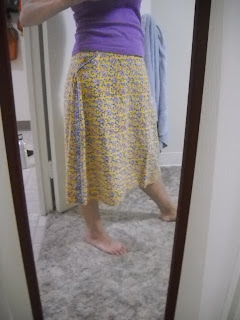
Inspired by friends' handiwork and craft blogs, I longed for a jewelry board of my own.
I have lots of canvas squares, left over from two Christmases ago.
The fabric is from a vintage bank bag, like the kind you see starring in robbery heists. I spotted it at an Oregon coast antique shop. It was once cylindrical and had a toothy zipper, but I've long since torn it apart and pressed it into a single rectangular piece of fabric. It almost became a notebook cover for a boy, but then I thought...wait. I hate boys. :)
The buttons are my favorite. I've got a thing for vintage buttons, which almost competes for my interest of boys.
Of course, this jewelry board can't possibly hold up all of my necklaces (like bulky pearls or pendants), but at least my jewelry box is considerably less cluttered. Most importantly, my favorite necklaces - made of delicate chains - will no longer tangle each morning if they are neatly hung - hooray!
I arranged the rest of my pendants in a little candy dish that was a thrift store find.

And just 'cause, I felt inspired. Brooch tie!

































